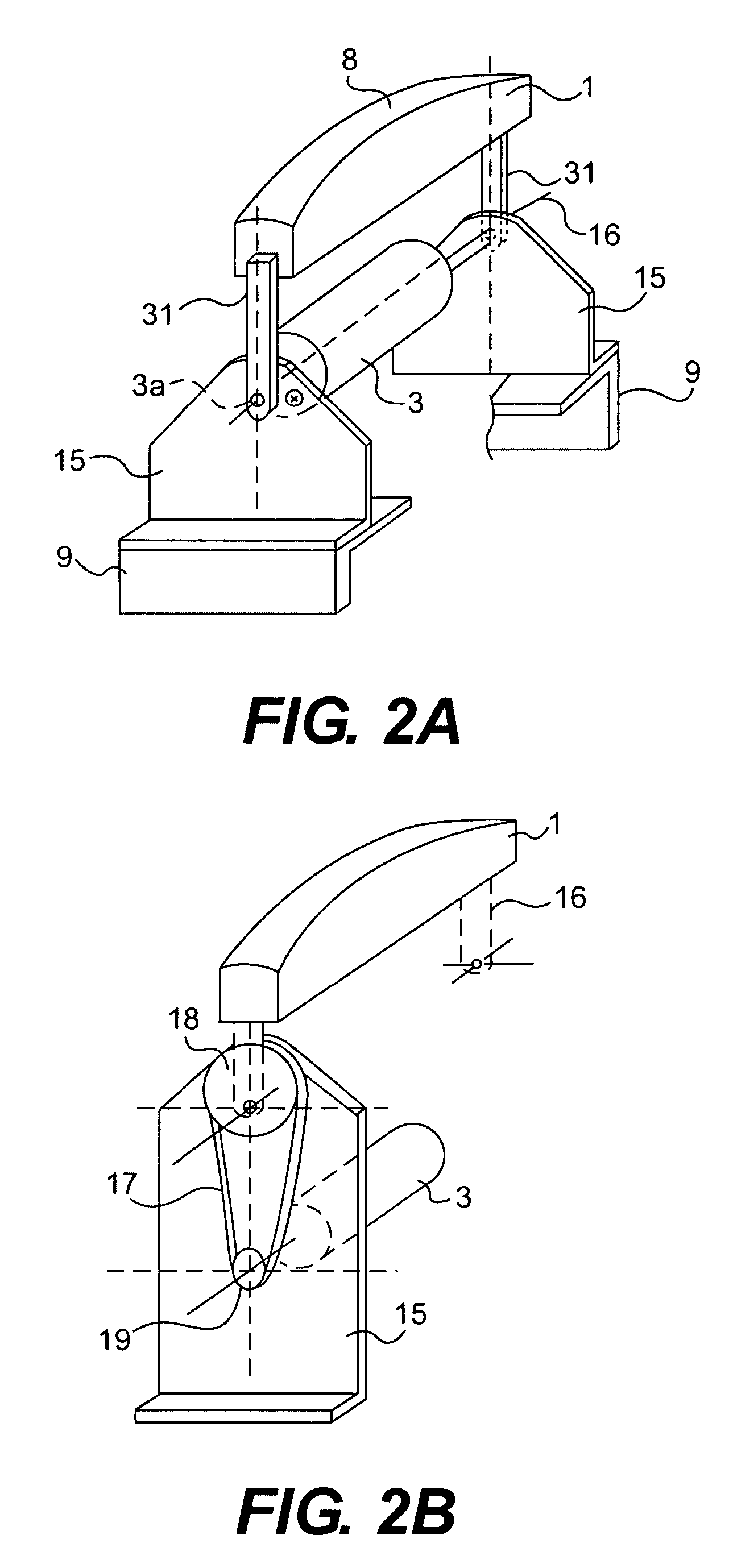Ultrasonic probe for scanning a volume
a volume scanning and ultrasonic technology, applied in the field of ultrasonic probes, can solve the problems of complex design and assembly of matrix array transducer devices, different design and assembly difficulties of rotating and swinging probe devices, and achieve the effect of minimizing resistance forces and avoiding undesirable acoustic effects
- Summary
- Abstract
- Description
- Claims
- Application Information
AI Technical Summary
Benefits of technology
Problems solved by technology
Method used
Image
Examples
Embodiment Construction
[0035]FIGS. 1A to 1C, in which the same reference numerals are used to denote similar elements, depict currently used prior art devices and illustrate conventional methods for moving an array transducer in order to obtain volume information. The array transducer 1 is used to provide planar electronic scanning images (i.e., 2D images) while the movement of the transducer 1 completes the acquisition of volume information.
[0036] In FIG. 1A, transducer 1 rotates in alternating fashion under the control of an energizing of motor 3 which is connected to the transducer 1 by a motor shaft 31. The transducer I is coupled to the motor shaft 31 at its center of symmetry so as to simplify rendering of the volume information. The direction of acoustic energy propagation from transducer 1 is controlled by rotation of the transducer 1 about the vertical axis that is superimposed on the axis of symmetry of transducer 1. This method of scanning is well developed and is convenient for use with movin...
PUM
 Login to View More
Login to View More Abstract
Description
Claims
Application Information
 Login to View More
Login to View More - R&D
- Intellectual Property
- Life Sciences
- Materials
- Tech Scout
- Unparalleled Data Quality
- Higher Quality Content
- 60% Fewer Hallucinations
Browse by: Latest US Patents, China's latest patents, Technical Efficacy Thesaurus, Application Domain, Technology Topic, Popular Technical Reports.
© 2025 PatSnap. All rights reserved.Legal|Privacy policy|Modern Slavery Act Transparency Statement|Sitemap|About US| Contact US: help@patsnap.com



